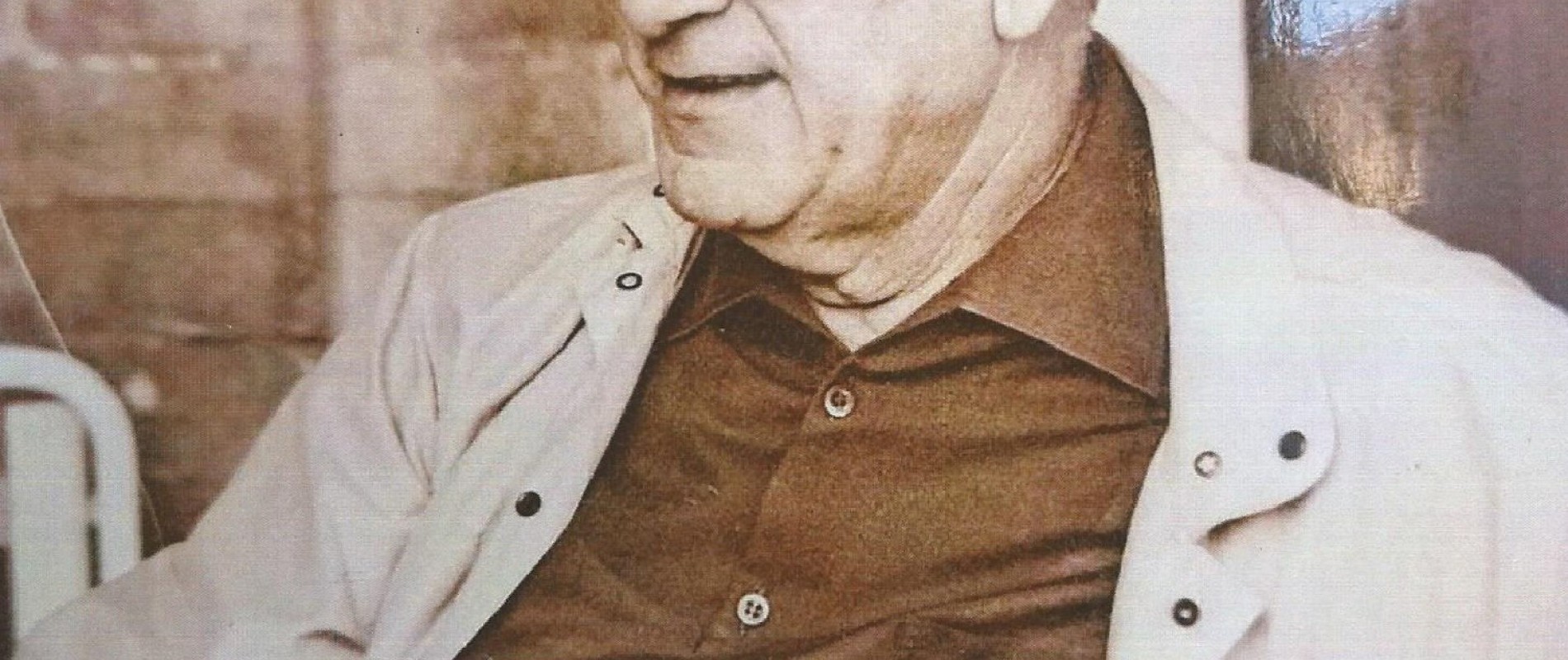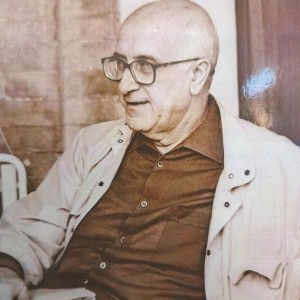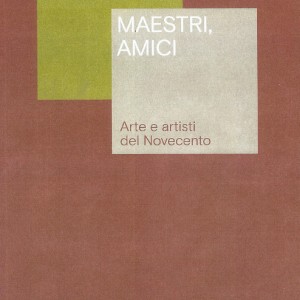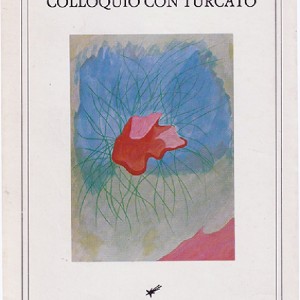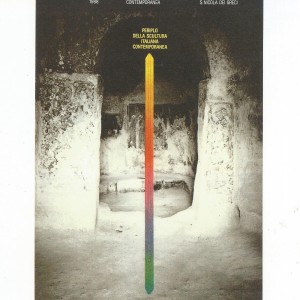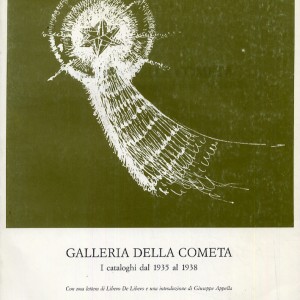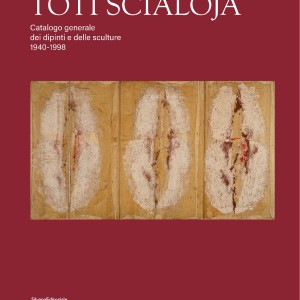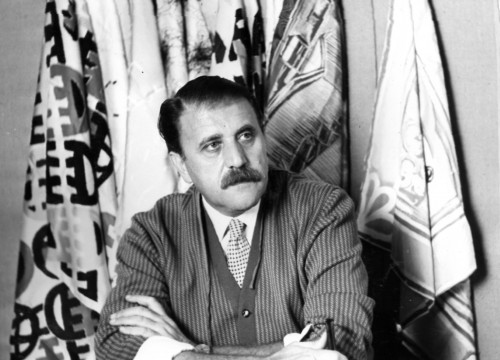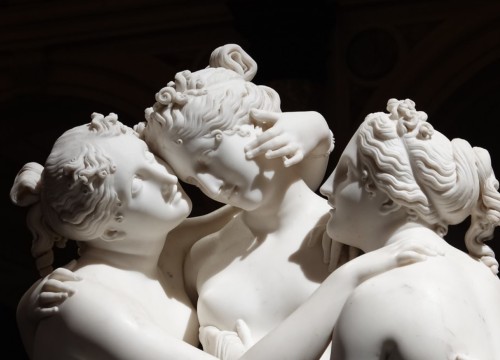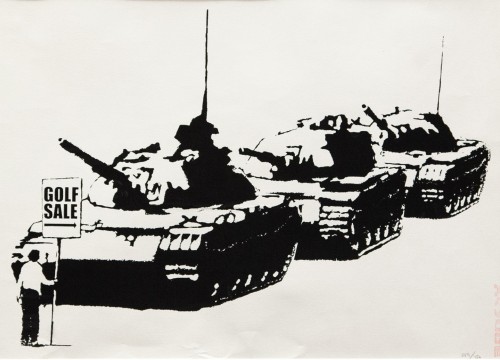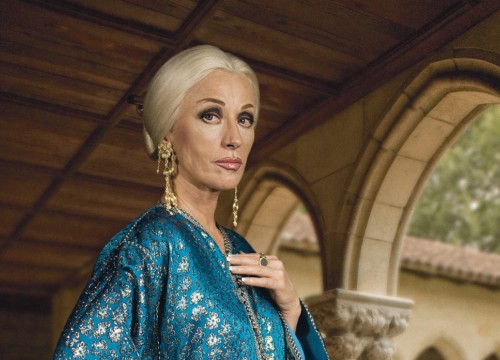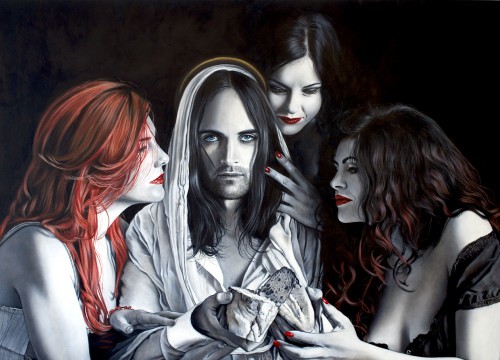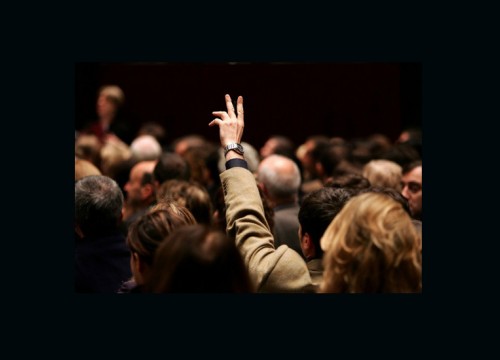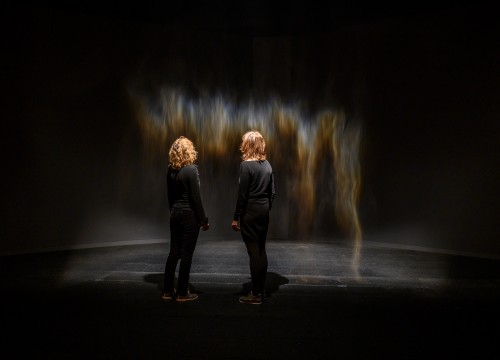In June 1978, the bond with Franco Palumbo and the friends of La Scaletta as well as with Pietro Consagra (given by the seven sculptures/labyrinth of “Trama” in the Biennale di Venezia in 1972) led me to the City of stones (Matera) for the exhibition curated by Giuseppe Appella. I had met him during my Roman years around galleries and on “La Fiera Letteraria” and I still remember him in the house of Corso Vittorio Emanuele II overflowing with books, volumes, catalogs and documents. From the Basilicata region, but Roman since always, Appella is a kind of concentrate of pure energy, many have been and are his activities: scholar, teacher, philosopher, researcher, journalist, critic, curator, manager of galleries and museums and, now, coordinator of the ACAMMM Museum System.
Director of the Edizioni della Cometa in 1979 and of “Il Millennio” founded by Leonardo Sinisgalli in 1980, he links his name to the 26 editions of “Grandi mostre nei sassi” (Fausto Melotti, Arturo Martini, Eliseo Mattiacci, Hidetoshi Nagasawa, Giuseppe Uncini, Gilberto Zorio, Alberto Viani, Leoncillo, Mirko, Consagra, etc.). From 2006 to 2014 he directed the MUSMA, Museum of contemporary sculpture in Matera, soliciting donations and loans; in 2011 he gave birth to M.I.G., International Museum of Graphics on Castronuovo Sant’Andrea.
To the critic and academic friend of San Luca, tireless curator of exhibitons (Scipione, Fausto Pirandello, Hans Hartung, Leo Longanesi, Giuseppe Uncini, and others), of volumes (“Maestri, amici. Arte e artisti del Novecento”, “Pasolini e Matera. Il racconto della mostra” with Marta Ragozzino, “Carlo Belli e il Mediterraneo”, “i Bulla. Editori stampatori d’arte tra XIX e XXI secolo”, etc.), as well as author of general catalogues (Achille Perilli, Guido Strazza, Antonietta Raphael, Alberto Giaquinto, Antonio Sanfilippo, Arnoldo Ciarrocchi) who I took a moment away from Toti Scialoja, I asked some questions.
When is your attention to art born? I could say when I was a boy, as a kind of vocation. I saw my first exhibition in Potenza, when I was in middle school. I entered a room where the artworks of Michele Giocoli were exhibited (1903- 1989, I later discovered his participation in the Biennale di Venezia, the contract with the Barbaroux Gallery in Milan, the echoes, brought to the South, of Expressionism, the Roman School and of what happened in Europe). Immediately afterwards, in Rome - where I arrived in 1953 - Picasso, at the National Gallery of Modern Art, ignited his passion. I still keep the catalog with a dedication. Without knowing it, I was looking for direct contact with artists. Curiosity, which is the basis of passion, and the many kilometers in museums have done the rest.
And what developments in time and ways? From a window of the house where I lived and which, coincidentally, was in front of Antonietta Raphaël’s studio, I saw a large sculpture, Escape from Sodom. One day, I walked up to that studio and I came across a small, already elderly, curly-haired woman dressed in a work suit. I asked about that sculpture and the answer was dry: “It’s mine”. It is easy to imagine the invitation to enter the study, the request for information to the young student I was and the friendship that followed, immediately extended to Mafai, De Libero, Falqui, Sinisgalli, Vigolo, part of the Roman school, and to those who had received encouragement. The good meetings and the teachers- friends have, therefore, marked a long path between different languages, but always turned to the future. From Raphaël-Mafai, to whom Scipione is immediately added, there is also an interest in artists closer to Europe (Melli, Bartoli, Bartolini, Maccari, Pirandello, Gentilini, Savelli, Afro, Turcato, Scialoja, Ciarrocchi, Sanfilippo, Perilli), for the sculptors who pushed me to research and deepening (Cambellotti, Martini, Melotti, Viani, Dino and Mirko Basaldella, Fazzini, Leoncillo, Andrea Cascella, Consagra, Somaini). In the meantime, trips abroad, first to Europe and then to America, determined the contacts with artists linked to Italy (Hartung, Richter, Matta, Hare, Kolibal, Lassaw, Azuma, Assadour), ready to exalt the passion for graphics, inevitably linked to literature.
The Roman headquarters of the French gallery Rive Gauche, the International Studio of Graphic Art L’Arco and its editions and the gallery Il Millennio, or the persistence of an exercise or something more? Everything I’ve done has to broaden my knowledge and allow me to study the artwork in depth. The Rive Gauche followed Dubuffet, Jorn, Bradley, Corneille and Lingstrom, but also the surrealists and the Italians Baj, Gentilini, Spacal, Mascherini. Graphics were at the center of a very intense activity. It also developed in the Roman headquarters of Via Margutta, where I was at home precisely because the Castelli editions had come back to life that, from the early 50s, had given strength to the artist-printer comparison. In fact, a few steps from the Rive Gauche worked a great lithographer like Roberto Bulla. Il Millennio, founded by Leonardo Sinisgalli, which I dealt with for some years after his death, on his precise indications, allowed me to give space to Melotti, moved to Rome, to all the artists of Forma (Consagra, Dorazio, Accardi, Sanfilippo, Perilli, Turcato) but also Del Pezzo and Verna, Giulia Napoleone and Rotella. The Arco, on the other hand, lasted 25 years, put together, through hundreds of exhibitions, the complete graphic work of the world’s leading artists engaged in a non-random relationship with European and American printers and publishers (from Picasso to Braque, Fautrier, de Staël, Zadkine, Arp, Richter, Duchamp, Goetz, Bram Van Velde, Appel, Clavé, Verna, Ginna, Music, Alechinsky, Manessier, Messagier, Dine, Hochney, etc. including talented young people who appeared on the international scene). An irreplaceable gym that highlights even more the crisis that today crosses the word- image relationship expressed through lithography, engraving, screen printing, carborundum and so on. This report has produced exemplary artist books and established a great collaboration with Vanni Scheiwiller who will be a guide within the Edizioni della Cometa.
What does it mean to direct since 1979 Le Edizioni della Comet founded by Libero de Libero?
Live a unique experience, publish 12 books a year, often of authors already linked to de Libero and the world of the Cometa Gallery, but also to Carlo Belli, Giuseppe Ungaretti, Alfonso Gatto, Tito Balestra, Pier Paolo Pasolini, an eye to the masters and the other to talented young authors (Biancamaria Frabotta). The interest, as always, was to build the book, see it born and grow, from the inside, following the example of Leo Longanesi, another devouring passion witnessed by a large exhibition at Palazzo Reale in Milan in 1997.
The “Grandi mostre di scultura nei sassi” and the Musma in Matera, the MIG in Castronuovo Sant’Andrea and today the ACAMM museum system: four moments of love for the native land or the measure of their civic commitment?
The “Grandi mostre nei sassi” and the creation of the Musma, which mark over half a century of commitment in Matera, aimed to make the city a cultural reference for the whole south, preserving a uniqueness as the Sassi, to be defended through art (the exhibition of Consagra, in 1978, had been built ad hoc) and not to be fed to tourists. The result is there for all to see. A total failure. The Castronuovo Museum Centre was founded around the Municipal Library in the name of my father and his teaching, not unlike the thought of Cesare Brandi: what you have achieved in your life must be returned to your country of origin. The restitution, however, is linked to the need to make it clear that there are no longer cultural peripheries and that our countries can be the center of the world, only that they come together, always look to the skills and not to opportunism, do not waste energy in the usual parochialisms and avoid self-referentiality.
What is and should be the role of politics in the cultural sector?
Its role is fundamental, at the municipal, regional and national level, always keeping in mind that politics concerns all of us, the society to which we belong, not only the many who have made it a profession. The Ministries of Culture and Education, the Departments of Culture of the regions and the municipalities themselves, are the cornerstones of a nation if it looks to the future and believes in democracy. The need for culture must always correspond to a good administration of culture and this is possible only if politics intersects with life and with those we call experts. But how many, between ministers and assessors, are involved in the work or, carrying out their demanding political task, rely on those who know more than they do?
Where does Italian contemporary art go?
In a globalized world, where art has become a refuge asset and is moved like a stock exchange action, can we talk about an Italian contemporary art, distinct from the European, American, African, Chinese and so on, the latter now at the top of the new discoveries? We live the world, every day, through our mobile phone, we always assimilate new images without being able, often, to escape this continuous bombardment. Yet, the great past of Italy, the beauties preserved in museums, churches, villages, continue to feed our young artists and help them to foretell, often before others, decades in advance, the time that will come.

